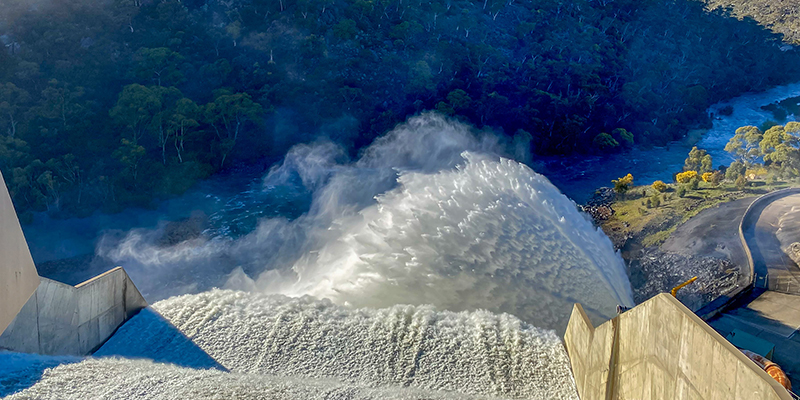Snowy River high-flow environmental releases begin in September
Property owners on the Snowy River and other stakeholders are being advised three high-flow environmental water releases will be made from Jindabyne Dam between mid-September and October this year as part of ongoing efforts to maintain the river’s ecological health.
The planned releases for the 2025-26 water year have been organised by the NSW Department of Climate Change, Energy, the Environment and Water (DCCEEW) in close consultation with the Snowy Advisory Committee and Snowy Hydro. They include:
- 17 September 2025 - daily flow of 2,000 ML/d over 24 hours, with equivalent peak flow 3,000 ML/d for eight hours from 8am to 4pm
- 2 October 2025 - daily flow of 3,500 ML/d over 24 hours, with equivalent peak flow 4,500 ML/d for eight hours from 8am to 4pm
- 15 October 2025 - daily flow of 5,000 ML/d over 24 hours with equivalent peak flow of 9,000 ML/d for eight hours from 8am to 4pm, if Jindabyne Dam levels are high enough to enable delivery via the spillway. Alternatively, the flow will be reduced to 5,000 ML/d delivered via the cone valves at a constant rate for 24 hours.
These annual flows are necessary to flush the riverbed of sediment that will provide seasonally appropriate habitat for fish, frogs and platypus, as well as their food sources such as invertebrates and crustaceans. In addition to the large flow releases, frequent smaller releases will be made throughout the year.
The NSW Government is committed to keeping the public informed and will issue reminders closer to each event. It is also important to note that the plan is subject to change, depending on weather, operational and environmental conditions.
In addition to the planned releases, other initiatives are being trialled to support the health of the Snowy River. This includes a pulse of water released in January, followed by smaller flows, to flush pools along the river and combat the mouth of the river closing during dry conditions.
As an outcome of the Snowy Water Licence Review, flexible delivery of smaller flows will also continue enabling the volume and timing of releases under 2,500 ML per day to quickly change to respond to natural cues such as rainfall events.
Please check the DCCEEW website for any changes closer to each of the planned events at: Snowy River increased flows.
NSW Department of Climate Change, Energy, the Environment and Water Director Asset Management and Performance, Aurelio Lindaya:
“High-flow water releases are designed to better mimic the natural flow characteristics that are seen in Snowy Mountain rivers, including snowmelt and ‘freshes’ that occurred before the construction of the Snowy scheme, with the aim of improving the long-term health of these river systems.
“The largest event planned in this year’s series is a ‘flushing flow’ on 15 October. These are important to help develop a more defined river channel within the former riverbed to assist in achieving the long-term goal of returning the Snowy River to a smaller, but healthy montane river.
“We’ll also be making frequent smaller releases throughout the year which have been shown to improve river health by establishing a new smaller channel, wetting the riparian zone and promoting the establishment of aquatic and riparian vegetation.
“Downstream landholders and visitors to the area are encouraged to make appropriate plans ahead of the water releases, including securing watercraft and moving stock, pumps and infrastructure to higher ground and being aware of flows.”
